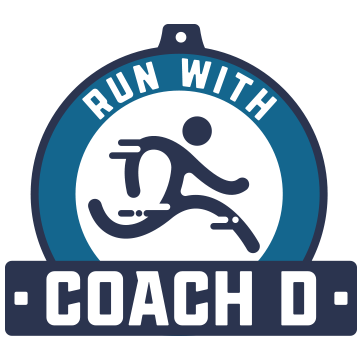Blog Takeover: What’s the easiest way to get faster?
Hi Team!
Coach Cody here. It’s my turn to take over our newsletter this month, and I’d like to ask you a quick question? What’s the easiest way to get faster as a runner?
Well, let’s lay it out:
Increase VO2 max (our ability to use oxygen)
Increase lactate threshold (buffering that burning feeling)
Get lighter (Not recommended)
Increase running economy
Of each of those four options, which one is the fastest way to a faster you? Increase your running economy. What is it and what does it have to do with strength training?
Well, Running Economy is the amount of oxygen consumed at submaximal efforts. Or like a gas guzzling car compared to an efficient hybrid. We want to train to be a Prius, not a Hummer. Not sexy, but efficient.
So now that you know what it is, how do we improve it? There’s plenty of ways: But two we’re going to focus on are resistance training and plyometric training.
Resistance or strength training is exactly what it sounds like, lifting heavy things with power and control. Plyometric or jump training is a progression of jumps (jumping off two legs), hops (bouncing on one leg), bounds (jumping from one leg to the other), or depth drops (stepping off a higher box and jumping as soon as you hit the ground). Adding these two elements to your training can generate big returns in speed and injury prevention.
Studies have consistently demonstrated increases in running economy (oxygen use at specific submaximal running speeds) and reduction of common running injuries.
How? By building muscle stiffness (your muscle’s ability to stay rigid) and transfer forces in the most efficient way possible.
In studies conducted over 10-12 weeks, strength training runners lead to a 4-5% increase in running economy without any increase in body mass or Vo2Max.
This is because most of the studies were conducted with heavy loads of up to 85% 1RM for specific running exercises.
Running Specific Strength:
What does that mean? We want to do exercises that closely mimic the physical demands of running. You can do that by choosing single leg movements that emphasize running-like positions.
Here are three exercises I like to do with newer strength training runners:
RFESS: Single leg squat movement that loads similar to running.
3 Point Rows: Pulling exercise that matches the core stability used between legs and torso while running.
Pogo’s: Short but quick jumps on two legs for duration or reps; they help build the stretch-shortening cycle of the calves and achilles.
How can you start?
Begin with bodyweight, lots of reps, and learn the movements. Start with two legs (squats) if needed and progress to single. Start with 3-4 sets of 8-10 reps and work to find a weight that feels challenging in that range; but doesn’t lead to a breakdown in form.
In the first workout use each set to find a weight that you can do for 8-10 reps, but that feels challenging to hit 10 reps by the last set. That’s your starting weight. The next workout begins with that weight, see if you can do 3-4 sets of 10 reps. If you can’t, then stay at that weight until the next workout and try again. If you can’t hit 8 reps for all of those sets, it’s probably too heavy.
For upper body movements you should aim to increase weight by 5-10 lbs every time you go up, for lower boyd aim to increase by 5-20 Ibs
Be consistent. Weightlifting isn’t flashy. Simplicity and consistency win in the long run. Like the tortoise and the hare, slow and steady always wins.
Rest between workouts (24-48 hrs, no more than 72hrs)
Do it after your runs! You don’t want to run on tired legs, so either do your strength training a few hours after your runs or on your off days.
For plyos, I like to start with simple pogo’s on two legs, doing 5 sets of 10 seconds and increasing time from there.
As in starting anything new, if you’re not confident in your form or not sure how to progress I recommend working with a local running or strength coach who understands running to guide you and teach you good form. If you’re interested in learning more from Run with Coach D, we’re happy to help too! You can send a consultation request here.


